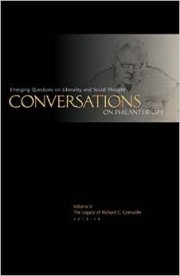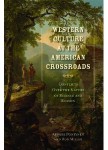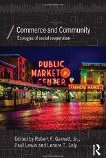Comment on Turner III
Does today’s America have an appropriate mythology for The Gift? Do we offer the right stories about why gifts are so important? Frederick Turner raises some concerns in his provocative essay. As would befit my broader body of work on the arts (Cowen 1998, 2000, 2002), I am optimistic. Let us first look at some facts and then return to the mythology issue, noting of course that a mythology can be true as well as convenient.
American philanthropy brings culture and beauty into our lives. Take U.S. symphony orchestras. The details of estimates may vary, but according to one source, 33 percent of their income comes from private donations and 16 percent from endowments and related sources. Concert income generates 42 percent of their revenue, and direct government support provides only 6 percent of their income. For nonprofit arts institutions more generally, individual, corporate, and foundation donors make up about 45 percent of the budget. Twelve percent of their income comes from foundation grants, two and a half times more than what is provided by the National Endowment for the Arts and state arts councils combined (see Johnson 1997, 9; and Dowie 2001, 169).
Generous Society
Americans are by far the world’s most generous donors to the arts. Total charitable giving to the arts from U.S. individuals, foundations, and corporations now stands at about $10 billion per year. These donations come from private individuals (80 percent of the total), foundations (13 percent of the total), and corporations (7 percent of the total). In contrast, individual private philanthropy to the arts is virtually nonexistent in most European nations. If we look at individual donors, Americans give almost ten times more to nonprofits, per capita, than do their French counterparts (Weil 1991, 177; Report 1997, 12, 18; and Creative America 1997, 18; on the French comparison, see Archambault 1997, 208).
In addition, Americans’ donations of time—equal in scope to 390,000 full-time volunteers—are at least twice as valuable as their dollar donations. As of the early 1990s, the average donor of time had an annual income of over $56,000, which would place the implicit dollar contribution of these time donations at over $20 billion, with some estimates going as high as $25 billion (see Wyszomirski 1999, 186; Cobb 1996., 13; and Report 1997, 14).
Even some European arts institutions, especially in Great Britain, find their leading private donors in the United States. In the mid-1980s, for example, J. Paul Getty donated $62.5 million to the National Gallery in London, the largest donation the institution has received. The Tate has raised significant American funds as well. To capture such donations, many British nonprofits now have American affiliates with tax-exempt status in the United States (Vogel 2000).
American foundations are significant in their size and scope. In 1999, American foundations gave an estimated $1.55 billion to the arts (see Cowen 2004). Looking back through American history, the Ford, Carnegie, and Mellon foundations, among others, have been instrumental in supporting a wide variety of high-culture enterprises, especially museums, orchestras, and libraries.
America’s corporations are only slightly less important arts donors than are the nation’s foundations. A 1995 study found that U.S. businesses gave $875 million to the arts in the preceding year. Forty-seven percent of all U.S. businesses surveyed gave money to the arts, and American businesses devoted an average of 19 percent of their philanthropic budgets to the arts (Grimes 1995).
Multiple Mythologies
So what is the mythology that sustains this incredible and unprecedented burst of generosity? What is the ideology that glorifies The Gift?
The American secret is that we have no overarching mythology. Instead, our legal and institutional structures allow foundations, businesses, and individual donors to construct their own mythologies. Myths and stories then compete against each other in the broader marketplace of ideas.
Consider a typical arts institution, such as a museum. The museum will appeal to its donors on a variety of bases. Sometimes the museum will play up the overall importance of the arts for a liberal education, or for the public understanding of Western history. Other times the museum will stress the economic development of the community, and the ability of the museum to draw out-of-town tourists. Yet other times, the institution will position itself as a focal point for business and social contacts in the local community. In addition, particular exhibits will receive their own unique marketing to donors, depending on the nature of the material. No one of these ideas is the mythology for The Gift; rather they all are.
The multiplicity of mythologies does not stop here. The United States has thousands of museums, which compete against each other in a broader market for philanthropic funds. Differing museums offer varying moods, images, and mythologies in their marketing campaigns. They promote and offer values of snobbiness, accessibility, friendliness, gratefulness to donors, relative aloofness, and so on. Museums also present mythologies through differing media. The methods of mythology presentation include direct mail, donor visits, donor retreats, museum events and fundraisers, donor plaques, naming opportunities, and phone calls to donors, to name just a few. A competitive process encourages use of the more effective mythologies and weeds out the losing mythologies.
Since people are so different from one another, give for so many different reasons, and give to so many different forms of creativity, we should not expect a dominant mythology to arise. And this discussion, of course, has considered only museums. The competitive ferment also includes orchestras, poetry magazines, grants to individual artists, libraries, and many other ways of funding human creativity. All of these contribute to the broader production of our gift mythologies.
So, can we squarely identify The American Gift Mythology? No. Are American gift mythologies alive and healthy? Yes. Why do American Gift Mythologies lead the world? Because we allow those mythologies to be shaped by private, voluntary, and competitive processes, firmly embedded within a wealthy capitalist economy and the rule of law.
REFERENCES
Archambault, Edith. 1997. The Nonprofit Sector in France. Manchester: Manchester University Press.
Cobb, Nina Kressner. 1996. Looking Ahead: Private Sector Giving to the Arts and the Humanities. Washington, D.C.: President’s Committee on the Arts and the Humanities.
Cowen, Tyler. 1998. In Praise of Commercial Culture. Cambridge: Harvard University Press.
Cowen, Tyler. 2000. What Price Fame? Cambridge: Harvard University Press.
Cowen, Tyler. 2002. Creative Destruction: How Globalization is Shaping the World’s Cultures. Princeton: Princeton University Press.
Cowen, Tyler. 2004. Symbolic Goods: The Liberal State in Pursuit of Beauty, or How Should Government Best Support the Arts?, unpublished manuscript.
Creative America: A Report to the President by the President’s Committee on the Arts and the Humanities. 1997. Washington, D.C.
Dowie, Mark. 2001. American Foundations: An Investigative History. Cambridge: MIT Press.
Johnson, Arthur T. 1997. “Symphony Orchestras and Local Governments.” Working paper, Maryland Institute for Policy Analysis and Research, University of Maryland, Baltimore County.
Report on a Creative and Generous America: The Healthy State of the Arts in America and the Continued Failure of the National Endowment for the Arts. 1997. Prepared for use by the Subcommittee on Oversight and Investigations of the Committee on Education and the Workforce, U.S. House of Representatives. Washington, D.C., September 23, 1997.
Vogel, Carol. 2000. “Arts Patrons with a Trans-Atlantic Reach.” The New York Times, Thursday, September 28, 2000: B1, B9.
Weil, Stephen E. 1991. “Tax Policy and Private Giving,” in Stephen Benedict, ed., Public Money and the Muse: Essays on Government Funding for the Arts. New York: W.W. Norton & Company: 153-181.




